Apartment Arborist
by Jalina Adams
Hi, my name is Jalina Adams. I am 16 years old, and I’m a Youth Forest Council Intern. I wanted to join YFC because of the experience and skills I would gain during my internship. Throughout the program, I've learned best practices for tree planting, mulching, and pruning, including how to safely use equipment, prepare soil and fertilizer, and predict how tree growth will impact the surrounding area.
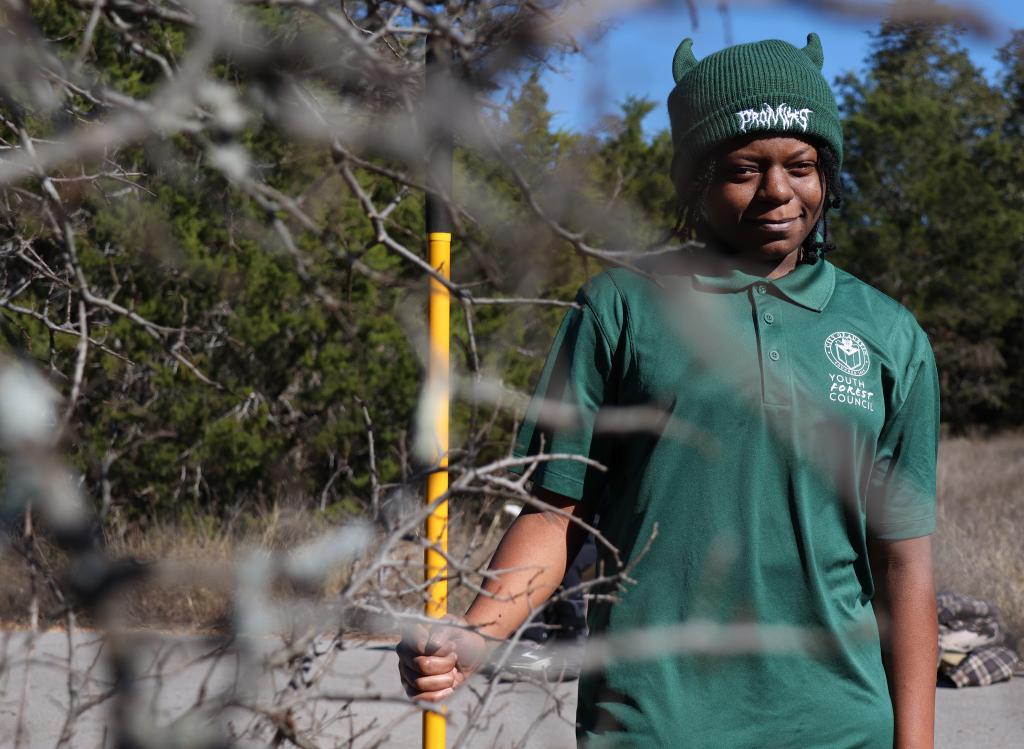
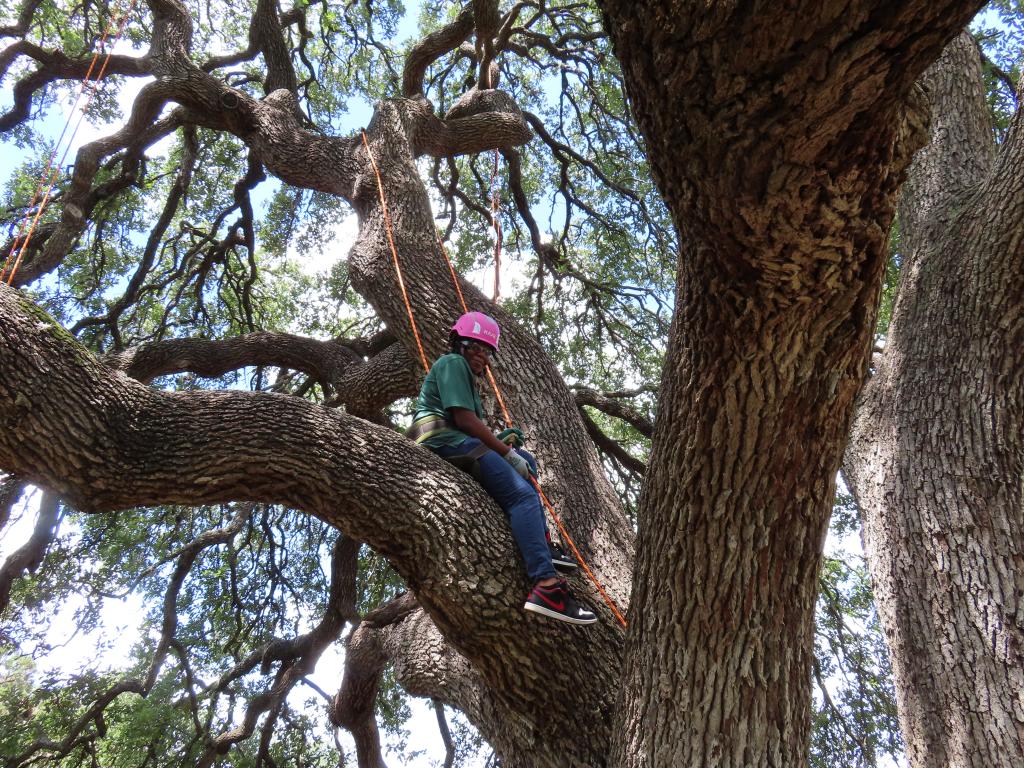
While growing up, I was always a tree person and loved trees very much, as I had different species of trees in my backyard. Being able to work here and gain more information about trees and how to take care of them properly motivated me to plant more trees in places that needed it, and to go out to help neighbors take care of their trees.
My Community Action Project
Background
For my Community Action Project, I was interested in growing small trees on my apartment balcony to experiment, and see if it was possible to grow small trees from seeds into sprouts and saplings and eventually to full grown trees that I can plant in my apartment complex or somewhere else near where I live.
Before starting this experiment, I spoke with the TreeFolks Seed Collection and Nursery Manager, Vit Kaspar. He helped me choose which seeds would be best to grow for this project, and gave me information on each of the seeds, including how they should be maintained and planted depending on what kind of care each seed needed. Vit also sent me advice for soil and fertilizer combinations to put in my grow bags/pots and how many inches deep I should plant the seeds.
For my project, I decided to grow three species of trees, including a Bur Oak, a Kidneywood, and a Mexican Buckeye. All of these trees are grown in five-gallon pots/bags when starting off as seedlings. As they grow, they will be swapped out for a bigger pot until they are ready to be planted into the ground.
Timeline
February 15th, 2025: I planted two Bur Oak seeds, with one seed in a grow bag and the other in a grow pot. Then, I planted a few Kidneywood seedlings in a grow bag and one Mexican Buckeye seed in a grow pot. I watered them and let them sit in the sunlight.
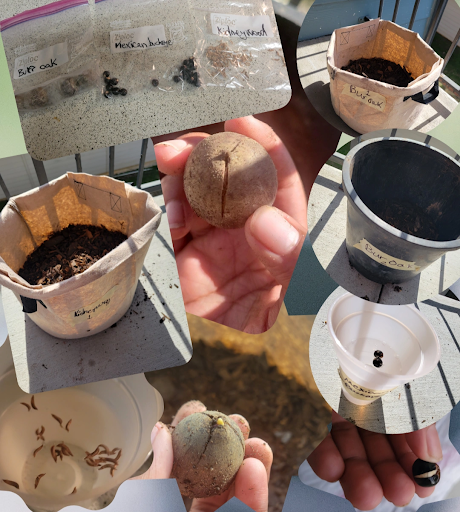
March 5th, 2025: I started noting the progress of the seeds. Both Bur Oak seeds grew a crack at the bottom. My Mexican Buckeye and Kidneywood seeds had no growth progress yet, which led me to water all of my seeds.
March 8th, 2025: I realized I made a mistake by putting the Mexican Buckeye seed straight into the grow pot, which explained why there was no growth. I took Vit’s advice to put the seed in a damp paper towel in a plastic bag and left it in direct sunlight.
March 12th, 2025: The Mexican Buckeye seed grew a crack at the top and side of the seed.
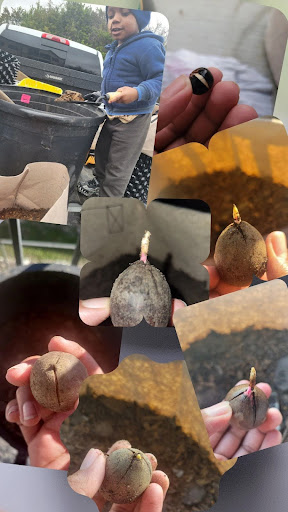
March 14th, 2025: Bur Oak #1 (in the grow bag) grew a longer root. The Mexican Buckeye seed had cracked more, and it was almost time to plant it. The Kidneywood seed had no signs of growth yet.
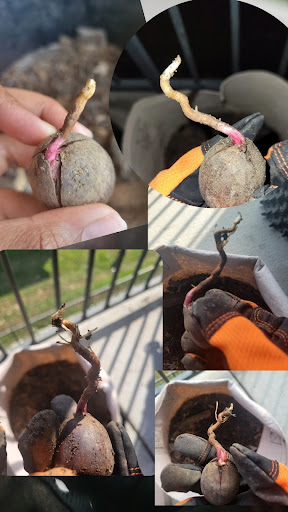
March 15th, 2025: The Bur Oak seed’s roots grew longer and had tiny roots growing on the side of it.
April 1st, 2025: The Bur Oak seed's gained more roots that started to spread out, and the Kidneywood gained one sprout from the grow bag.
April 4th-10th, 2025: The Bur Oak seed's roots grew much longer and healthier and on April 10th, the second Bur Oak seed started gaining a small root base.
April 23rd, 2025: The second Bur Oak seed's roots grew longer and gained little tiny roots connecting to the main root.
Info & Benefits of the Trees
Bur Oak
Quercus macrocarpa, commonly known as a Bur Oak tree, is a medium to large tree with a broad, rounded crown and a massive trunk. Bur Oak trees can be found around the world. They are common in the eastern United States and the Great Plains, ranging from central Maine, New Brunswick and North Dakota/South Dakota to southeastern Texas. A Bur Oak seed is called an acorn, The developing acorn starts small and is covered in fuzzy green hairs. The Bur Oak tree provides shade, habitat for wildlife, oxygen, food for animals and humans, and also wood for many purposes, such as pencils, paper, and instruments.
Mexican Buckeye
Ungnadia speciosa, commonly called Mexican Buckeye, is a native plant of North America, typically ranging from 8-12 feet tall but sometimes reach up to 30 feet in height. This tree is known for its pinkish purple flower in the spring. Mexican Buckeye is not a true buckeye (Aesculus sp.), but was named this because of how similar the seed looked to a true Buckeye. The flower of this tree can produce really good honey that you can buy in native plant nurseries. The Mexican buckeye tree is native to rocky canyons and ridges and can be found in Central, West, and South Texas, and east to Dallas county.
Kidneywood
Eysenhardtia texana, also known as a Kidneywood tree, is part of the pea family (Fabaceae). It can grow up to 3-10 feet tall, and it has a light structure with resinous leaves and flowers. The leaves can reach up to 3-1/2 inches long. Their flowers produce seed pods which consist of a threadlike tip as the flower blooms May through October. The Kidneywood tree is mostly found in busy vegetation in places like Rio Grande Plains, Central and West Texas. They typically grow in dry, bushy hills and canyons. The Kidneywood tree provides a lot of benefits, as the flowers attract bees and butterflies and provide food for deer and goats. The wood can also be used for dyes.
Resources:
Bur Oak Tree:
Mexican Buckeye Tree:
Kidneywood Tree:

This information is sponsored by the City of Austin. Learn more about trees and resources at the Tree Information Center!
Join us on social @NatureCityATX, where we're cultivating connections!

